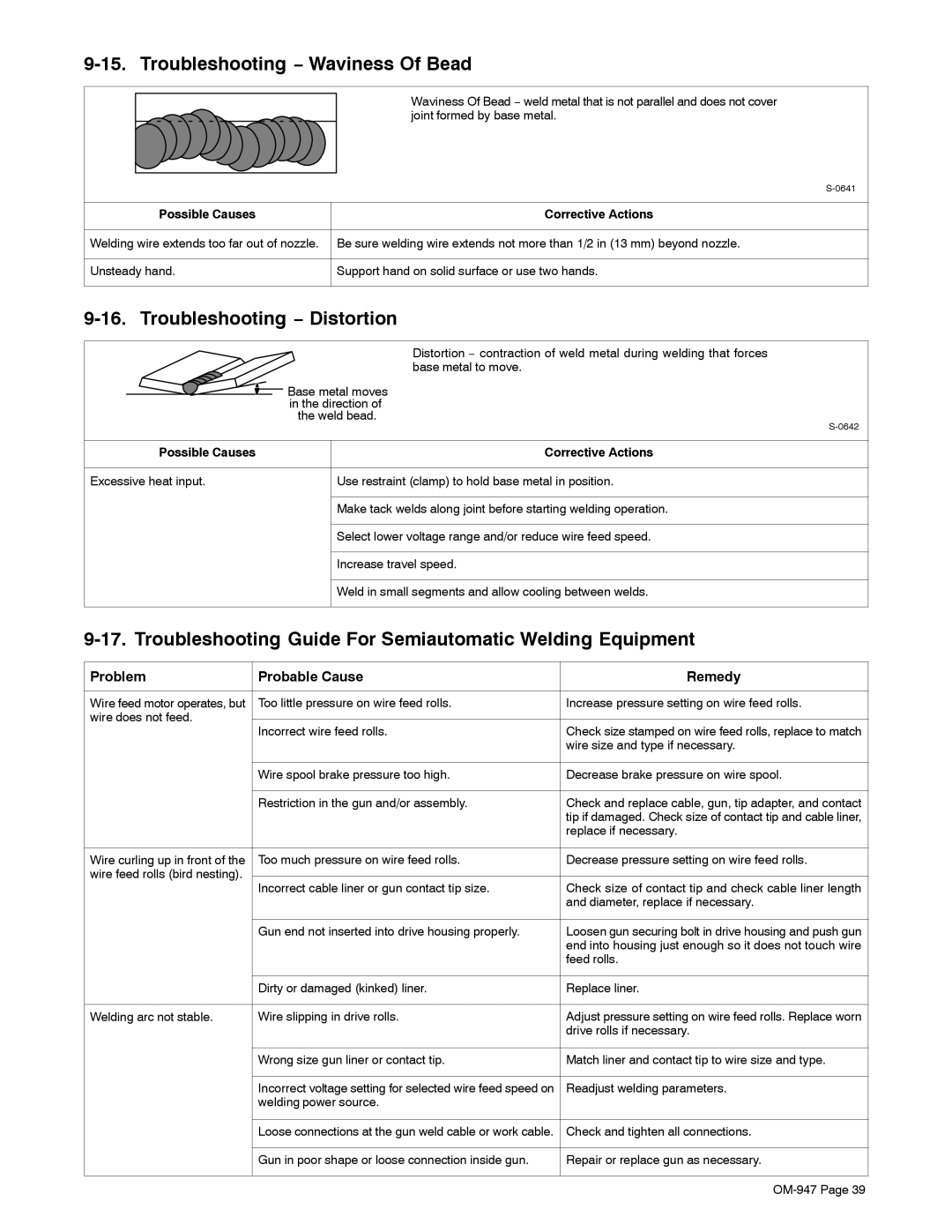OM-947 specifications
Hobart Welding Products has made a significant mark in the welding industry with its cutting-edge equipment, and the Hobart OM-947 is no exception. This multi-process welder stands out for its versatility and user-friendly design, ideal for both beginners and experienced welders alike.One of the main features of the OM-947 is its multi-process capability, allowing users to perform MIG, TIG, and stick welding, all in one machine. This flexibility makes it an appealing choice for diverse welding applications, whether in automotive repair, metal fabrication, or industrial maintenance. The OM-947 can easily switch between processes, ensuring efficiency and convenience in various tasks.
The machine is engineered with advanced technology that enhances welding performance. Its inverter technology provides a stable arc and reduces energy consumption, which not only cuts down operational costs but also improves the welder's overall performance. The Hobart OM-947 boasts a high-duty cycle, allowing users to operate it for extended periods without overheating, making it suitable for professional environments.
In terms of characteristics, the OM-947 features a digital display that allows for precise control over welding parameters. This user-friendly interface simplifies the adjustment process, enabling welders to focus more on their craft rather than struggling with complex settings. The machine also comes with a built-in automatic voltage control, which adjusts the voltage according to the chosen process and material thickness, ensuring optimal welding conditions and reducing the risk of defects.
Another notable aspect of the OM-947 is its portability. Weighing in at a manageable level, coupled with a compact design, the machine is easy to transport between job sites, making it ideal for mobile welders. Furthermore, the rugged construction of the unit ensures durability even in demanding environments.
Safety features are paramount in welding equipment, and the Hobart OM-947 does not disappoint. It includes a thermal overload protection system that prevents overheating and potential damage to the welder, offering peace of mind during use.
Overall, the Hobart Welding Products OM-947 delivers impressive performance, versatility, and user-friendliness. It is designed for welders who demand quality and reliability from their equipment while being accessible enough for those who are just starting their welding journey. With its innovative features and robust design, the OM-947 truly sets a benchmark in the world of welding.

